-
15 Days
-
Group Tour
-
Oct 19 - Nov 03
Description
Egypt where the civilizations were begun
| Program | Egypt Tour Packages 08 days Cairo, Nile Cruise, and Alexandria |
| Duration: | 14 Nights / 15 days |
| Destinations covered: | Cairo »Nile Cruise 3 Nights »Alexandria» Cairo |
(11nights Cairo » 03 nights Nile Cruise)
Combine the ancient and Modern Engineering projects
Perhaps after the Giza pyramids, or coincident with them, the great temple of Abu Simbel presents the most familiar image of ancient Egypt to the modern traveler and reader. When the conservation efforts to preserve the temple from the soon-to-be-built High Aswan Dam and its rising waters were begun in the 1960s, images of the colossal statues filled newspapers and books. The temples were dismantled and relocated in 1968 on the desert plateau, 200 feet above and 600 feet west of their original location.
Experience Egypt and feel like royalty only with Khaled Abbass Tour Guide
Itinerary
Welcome to Cairo. Your tour begins when you are greeted by our representative who will assist you through customs formalities. After you have collected your luggage, he will then take you, in our deluxe vehicle, to your Cairo hotel where you will meet your guide who will revise the tour plan with you.
Discover the history of pharaohs through an amazing tour that suits your needs, at the morning time we will take you from the hotel in Cairo by a private air-conditioned car to start a day trip from Cairo to Pyramids, the Museum, and Coptic Cairo starting with:
Giza Pyramids Complex
The three main pyramids of Giza (Khufu, Khafre, and Menkaure) are sufficient enough to build a 2-meter-long wall and span 100,000 square kilometers around the globe along with the equator.
The Great Pyramid
The Great Pyramid of King Khufu is considered largely represents the spirit of ancient Egypt, King Khufu who built this Pyramid as a cemetery has left little information about his reign.
The Magical Sphinx
Who among us when mentioning the name of the Sphinx does not think about this stone sculpture that carved in the form of the human head and lion body, which is located in the Giza plateau in Egypt the Sphinx is one of the oldest and the largest sculptures in the world, it’s about 73.5 meters long and 6 meters wide.
The Egyptian Museum
Centrally located on the edge of Tahrir Square in Cairo, the Egyptian Museum is hard to miss on any tour of Cairo. Opening in 1902, it was purpose-built to house the antiquities of Ancient Egypt. The museum was founded in 1857 by French Egyptologist August Mariette
Located in Downtown Tahrir Square in Cairo, The Egyptian Museum in Cairo houses over 120,000 artifacts, including the contents of Tutankhamun's tomb and most of the mummies that have been discovered since the 19th century.
Enjoy your lunch and it will be served at a local restaurant after the day tour. Then return to your hotel and overnight in Cairo.
A new day starts with breakfast, and then you will be driven catch your flight to Aswan where your guide will take you to see the High Dam, the Temples of Philae, the unfinished Obelisk, check in your Nile cruise and have lunch and then visit The Nubian village and the Botanical Island. Your visit includes:
Aswan High Dam
At Aswan High Dam, you’ll hear from your tour guide the whole story of its construction and how it helped the Egyptians a lot to improve their economic and social state. Then, you’ll move to witness the miraculous:
The Unfinished Obelisk
The Unfinished Obelisk was supposed to be standing in front of Hatshepsut Temple but some cracks happened to it which leads Queen Hatshepsut to order her men to move it to Aswan and it is characterized with its majestic size.
Philae Temples
Philae Temple was constructed in 690 B.C and it had been relocated with the help of the UNESCO because it was in great danger from the High & Low Dams of Aswan. It was dedicated to goddess Isis.
The Nubian Village & The Botanical Island
Discover the colorful culture of Nubia, one of Africa's oldest civilizations, traveling by felucca sailboat or modern motorboat, you'll meet locals, visit a traditional house, drink tea, and have free time to explore villages independently while Kitchener’s Island, to the west of Elephantine Island, was given to Lord Horatio Kitchener in the 1890s when he was commander of the Egyptian army. Kitchener turned the entire island into the stunning Aswan Botanical Gardens, importing plants from the Far East, India and parts of Africa.
After the end of the tour, you will be driven to your 5 stars Nile Cruise where you will have your lunch meal and make your check in then the rest of the day is yours. Dinner will be served onboard and overnight in Aswan.
Meals: Breakfast, Lunch, dinner
At the morning, enjoy your breakfast on the cruise then you will join your tour guide to the enchanting “Abu Simbel Temple” which is known to be a true piece of art. The two temples were carved out of the mountainside in 1200 BC during the reign of Pharaoh Ramesses II the second and his wife Queen Nefertari.
All the carvings, artwork, wall paintings, statues are extremely beautiful and tell incredible stories about Ramses victories at the battle of Kadesh and honor many gods like Ra, Amon, and Ptah.
Abu Simbel Temples
Abu Simbel temple complex includes 2 individual temples that were built during the reign of Pharaoh Ramses II. The great temple was built for the king himself to commemorate his coronation and his birthday and it has been built in a very impressive accurate way which makes the whole world await the Sun Festival that occurs only twice a year in the great temple of the Pharaoh to witness the miracle that occurs there. The smaller temple was built as a sign of love & appreciation from the king to his beloved queen Nefertari and she was the only wife of the king for whom he has built a temple.
Enjoy sun bathing and tea time on the deck of the Cruise. Once a shore you will visit the Temple of Kom Ombo, dedicated to the gods Horus and Sobek. After this great visit you will return back to the cruise for your dinner being served as it sails majestically towards Edfu.
The temple of Sobek in Kom Ombo
The Temple of Kom Ombo is an unusual double temple in the town of Kom Ombo in Aswan Governorate, Upper Egypt. It was constructed during the Ptolemaic dynasty, 180–47 BC. Some additions to it were later made during the Roman period. The building is unique because its 'double' design meant that there were courts, halls, sanctuaries and rooms duplicated for two sets of gods.
After the visit, you will be taken back to the boat for your dinner while it sails onward to Edfu, home of the best-preserved temple in Egypt: The Temple of Horus.
Meals: Breakfast, Lunch, dinner
You can enjoy an early breakfast. Once the boat is moored you will visit the best preserved temple in Egypt: the Temple of Horus. After your visit to this superb temple you will be taken back to the boat for your lunch while the cruise boat crosses the Esna lock to the city of Esna and continue sailing to Luxor.
Edfu Temple
Edfu temple which was dedicated to Horus, the son of Isis and Osiris and its walls are really impressive with its inscriptions and pictures showing Horus having his revenge from Seth the brother of his father Osiris. It is the best preserved and most complete in Egypt temple and second largest after Karnak.
After your visit to this superb temple, you will be taken back to the boat in plenty of time before it departs Edfu and sets sail for Esna. Once you reach Esna you will watch as it sails through the Esna locks. Once through the locks, the boat continues on its course towards Luxor, once the boat is moored you will visit the Temple of Luxor. Then return back to the cruise for dinner and overnight in Luxor.
The temple of Luxor
The Temple of Luxor was the center of the most important festivals and one of the best temples which you will visit. It’s one of the most important and famous ancient Egyptian temples, located in the city of Luxor, which is about 700 km from Cairo, it’s an important tourist destination for its monuments and its distinctive weather, which makes it a wonderful destination for tourists from all over the world.
After the visit, you will be taken back to the boat for your dinner while after dinner you can go out or you can rest in the cruise.
Optional Tour Sound & light show in Karnak
Enjoy Luxor Tours Watching Karnak Temple Sound and Light Show on the east bank illuminated at night with an audio-visual show that will explain how the temple was built and what life was like in Ancient Egypt. We will give you the chance to discover how life has been thousands of years ago? You will know about them through the splendid Sound and Light Show at the Karnak Temples.This spectacle will take about 75-minute first takes you around the temple grounds, and finally, the last act is played while you are seated along the Great Sacred Lake. The performance relates the history of Luxor as the capital of the ancient world.
Meals: Breakfast, Lunch, dinner
Your last breakfast on board followed by check out, and then you will be driven to see the Valley of the kings, the Temple of Hatshepsut, The Colossi of Memnon, Karnak temples. Your visit includes:
The Valley of the Kings
The Valley of the Kings is a place where most of the important ancient pharaohs of the New Kingdom were buried. It is considered a sacred place and it holds inside some souls of great Ancient Egyptians. Here we will visit 5 tombs ( 3 tombs by default ticket + Tut ankh Amun and Ramses VI)
The Temple of Hatshepsut
Hatshepsut (c.1473–1458 BC), the queen who became Pharaoh, built a magnificent temple at Deir al-Bahari, on the west back of Luxor. It lies directly across the Nile from Karnak Temple, the main sanctuary of the god Amun. Hatshepsut’s temple, Djeser-djeseru “the Holy of Holies” was designed by the chief steward of Amun, Senenmut.
The Colossi of Memnon
These two faceless colossi (the plural of colossus, which just means larger-than-life statue) are the first thing visitors see when they reach the west bank of the Nile opposite Luxor. This isn't surprising when you hear their dimensions: they tower 60 feet (18 m) above the plains and are estimated to weigh an enormous 720 tons each.
The Complex of Karnak Temples
Built over two millennia between the years of around 2200 and 360 BCE, Karnak is a massive Ancient Egyptian temple complex that was one of the country's most important places of worship under the rules of Hatshepsut, Seti I, Ramesses II and Ramesses III.
Lunch will be served at a high-quality restaurant then proceed driving to Luxor airport to catch your flight back to Cairo and overnight.
Meals: Breakfast, Lunch, dinner
Your day starts with breakfast in your hotel followed by a 2.5-hour drive, in our air-conditioned vehicle, to Alexandria where you will visit the following.
The Catacombs of Kom Alshaqafa
The Catacombs of Alexandria are the largest and most important burial site in Egypt that has a mixture of Roman, Hellenistic, and ancient Egyptian decorative art and elements that were all common during this period in Alexandria.
The Pmpai`s Pillar
It’s a column that stands on a rocky hilltop in the middle of Alexandria. Pompey Pillar is a triumphal monument erected around 300 AD for the Roman Emperor Diocletian.
Qait Bay Citadel
Qaitbay Citadel has been built during the 14th century by (Sultan Qaitbay) to defend Alexandria from the attacks of The Ottoman Empire. You can enjoy the Sea views, wonderful restaurants, and unforgettable touristic items while visiting it.
Lunch will be served during the day tour in a sea view restaurant in Alexandria and then we will continue our tour to visit
Library of Alexandria
Alexandria Library is the most ancient library of classical antiquity. In it, you can find a copy of every book published all over the World. It’s not just a building, it’s a complex where all arts, philosophy, ancient history come together.
Finally, we will transfer you in a private air-conditioned car to back to your hotel
Meals: Breakfast, Lunch
Start your day tour to Giza Necropolis where our driver will pick up you from your hotel in Cairo or Giza and join our professional tour guide to witness the real magnificence ancient Egyptian attractions through visiting:
The Step Pyramid of Saqqara
It’s called also step Pyramid of Zoser or Josser, due to the King Zoser who ordered his minister Imhotep to build it, this pyramid consists of six-layers, It’s height was about 197foot (60 meters). It is the first Pyramid ever built and it is the first largest scale stone building in the world.
Pyramid of Unas
The Pyramid of Unas is a smooth-sided pyramid built in the 24th century BC for the Egyptian pharaoh Unas, the ninth and final king of the Fifth Dynasty.
Pyramid Complex of Teti
Teti (c.2345–2323 BC), the first ruler of the Sixth Dynasty, built his pyramidal complex not far from the Step Pyramid of (c.2667–2648 BC), in Saqqara. Upon completion, it stood 52.5 m tall.
The mastaba tomb of Kagemni also known as Memi
The mastaba was discovered in 1843 by Richard Lepsius. It had to wait until 1905 before von Bissing would begin his publication of rooms IV to VIII, which wasn't completed until 1911.
The mastaba of Nikauisesi
The mastaba of Nikauisesi is situated in the north-east sector of the necropolis of Saqqara. The tomb was discovered in 1979-80 by the Supreme Council of Antiquities
The mastaba of Ankhmahor
The mastaba of Ankhmahor is situated on the northern side of Teti’s pyramid at Saqqara in the block of tombs belonging to the officials of the king’s Dynasty VI reign.
The Tomb of Hormoheb
The tomb from the time in which he was not yet Pharaoh Horemheb was discovered a first time in the 19th century, then it disappeared again under the sands. It was rediscovered in 1975 by Geoffrey Martin and his team who cleared the monument in four seasons of excavation.
The Tomb of Maya
At the end of the 14th century BC, Maya was one of the major figures in the Egyptian state, from the reign of Tutankhamun to that of Horemheb. His prestigious career is attested by his many titles and epithets, the most important of which is "Overseer of the Treasury" (that is Minister of Finance).
At the end of this exciting day, you will be driven back to your hotel after you will enjoy your lunch in one of the best local restaurants.
Meals: Breakfast, Lunch
It is said that Egypt is full of Pyramids and after breakfast you will get the opportunity to visit 2 more of them. You will be taken, in an air-conditioned vehicle, to Dashur where you will see the two pyramids built by the Pharaoh Snefru.
The Red Pyramid
The Red Pyramid was another project of the 4th Dynasty pharaoh Sneferu. After the completion of the Bent Pyramid, which also stand nearby in the Necropolis at Dahshur, Sneferu set out to correct the mistakes that were made in the construction of his that pyramid and the one at Meidum that collapsed during construction.
The Bent Pyramid
The Bent Pyramid is called a ‘transitional’ pyramid because the angle of its sides changes abruptly approximately one-third of the way up. Archeologists attribute this to an engineering crisis during construction.
After lunch, at a local restaurant, you will be taken to Sakkara to see the very first pyramid ever built
Memphis Open Air Museum
Memphis was the oldest capital of ancient Egypt, the first one that was founded after the unification of upper and Lower Egypt. The city was founded in the first dynasty (3100 BC).
After this amazing trip through Egypt's pharaonic past, you will be driven back to your hotel.
Meals: Breakfast, Lunch
After breakfast at your hotel we will meet in the lobby and start our unique day tour to
The Citadel of Cairo
The citadel of Saladin contains many monuments dating back to different Islamic eras, it was not only just a fortified castle that was used to defend the city but also many mosques and other purposes was in the citadel for 800 years.
Mohamed Ali Mosque was built on a rectangular area inside Salah al-Din Citadel, it’s divided into two parts
National Military Museum
This museum is the first of its kind to be devoted to the history of the Egyptian military through the ages. The museum was located in al-Haram Palace in 1949 in the Cairo Citadel in 1949.
National Police Museum
The National Police Museum is one of the museums in the Salah al-Din Citadel, located in its northern section. Its exhibitions display the history of Egypt’s police force.
Sultan Hassan & Elrefai Mosques
Mosque of Sultan Hassan is a primal example of the early Islamic Mamluk architecture between 1356 A.D and 1363 A.D. The Mosque is 150m in length and covering 7,906 sq m inland and its walls reach the height of 36 m.
Moaiz ST & Khan Khaliili
Elmoaz Street the largest open-air museum for Islamic monuments in the world, and a unique heritage site that was added to The UNESCO World Heritage List in 1979. While Khan Khalili is One of the wonderful places in Cairo and the oldest market in the Middle East it’s a medieval-style mall.
Enjoy your lunch and it will be served at a local restaurant after the day tour. Then return to your hotel and overnight in Cairo.
Breakfast at the hotel is followed by a full day tour, I will meet you at 8 am in the hotel lobby and start our visit to the
The National Museum of Egyptian Civilization.
The first museum of civilization in the Arab world, the NMEC will present a comprehensive view of Egyptian civilization from prehistory to the present day, taking a multidisciplinary thematic approach designed to highlight Egypt’s tangible and intangible heritage. A museum of a new kind, unknown so far in Egypt and the entire Middle East region, the NMEC’s main goal is to “share knowledge”, to connect with the surrounding Egyptian society and to offer international visitors a richer and deeper insight into the meaning of Egyptian culture through the ages. CAIRO CITY TOUR AND CAIRO TOWER
In the Cairo city tour you will explore the city of Cairo by night. Stroll through the main of Cairo's downtown streets Talaat Harb Str., Old Opera Square, New Opera, Attaba square with its all sorts of merchandise and enjoy a look at the city of Cairo from above the Cairo tower.
Experience Cairo like never before. Cairo City tour will take you on an ultimate adventure to explore the streets of Cairo and get closer to the Egyptian lives. This tour will show you another perspective of Cairo other than its well-known attractions. The Cairo city tour is designed for travelers who like to get in touch with the culture and live like the people of the country.
After breakfast you will check out and will be taken to a unique experience in Cairo which includes
Baron Empain Palace
Your Egypt trip will remain incomplete forever until you visit the spectacular Baron Empain Palace, also known as the El Palais Hindu, which is synonymous to showmanship and luxury of the city of Cairo. Situated on the landmark of Heliopolis and designed by French architect, this wondrous palace will grab your eyeballs with its fascinating history and magnificent oriental architecture.
The Royal Carriages Museum
The Royal carriages Museum in Boulaq is one of the earliest of its kind worldwide, both from the prospect of the authenticity of its building and the originality of its displays. The building was particularly adapted to preserve the cultural heritage of the royal carriages and all related material dating back to the era of Mohammed Ali Dynasty.
The idea of establishing the museum building dates back to the reign of khedive Ismail (r. 1863- 1879), who thought of founding a special structure for housing the horses and the khedivial carriages. Initially, the establishment was called the “Khedivial Carriages Service”, then its name was changed in 1922 to “Royal Stables Department (Royal Mews)” under the reign of king Fouad (r. 1917- 1936).
Another wonderful day in Egypt starts with breakfast and after that we will start the spiritual part of our tour through Coptic Cairo. Coptic Cairo is unique area with Old Cairo that has a concentration of Christian churches and other sites that date from the centuries between the decline of the pharaonic religion and the arrival of Islam when Egypt had a Christian majority. Coptic Cairo is largely built around the fort of Babylon on upon the remains of its walls. Saint Mercurius Church
Saint Mercurius Church in Coptic Cairo is a Coptic Orthodox church situated just to the north of the Babylon Fortress in Old Cairo among a group of important churches, and within the area known as the Abu Sayfayn Cloister is to be found three churches and a convent. One of these churches, dedicated to Saint Mercurius, and is the largest in the district of ancient Babylon.
The church is named after St. Philopater Mercurius who is known as Abu Sayfayn ("double sworded").
Hanging Church
The Hanging Church is named for its location above a gatehouse of Babylon Fortress, the Roman fortress in Coptic Cairo (Old Cairo); its nave is suspended over a passage. The church is approached by twenty-nine steps; early travelers to Cairo dubbed it "the Staircase Church".The land surface has risen by some six meters since the Roman period, so the Roman tower is mostly buried below ground, reducing the visual impact of the church's elevated position.
Church of the Holy Virgin (Babylon El-Darag)
The Church of the Holy Virgin in Babylon El-Darag was occupied from the 11th to the 15th centuries by several Coptic patriarchs, seven of whom were buried in the church. Pope Zacharias was one of them.
Pope Cyril VI of Alexandria used to pray in the church before assuming papacy. According to tradition, the church was one of the resting places of the Holy Family during their sojourn in Egypt, as well as the location from which Peter sent his epistle (1 Peter 5:13).The relics of saints Demiana and Simon the Tanner are contained in the church as well.
Saints Sergius and Bacchus Church
Saints Sergius and Bacchus Church is traditionally believed to have been built on the spot where the Holy Family, Joseph, Mary and the infant Jesus Christ, rested at the end of their journey into Egypt. They may have lived here while Joseph worked at the fortress.
The church is of significant historical importance, and in fact, it is where many patriarchs of the Coptic Church were elected. The first to be elected here was Patriarch Isaac (681-692). It is the episcopal church of Cairo, and it was the episcopal See of Masr (the district of Old Cairo) that replaced the former See of Babylon. Many bishops of the See were consecrated in the Church until the reign of Patriarch Christodulus (1047–1077).
Church of St. George (Cairo)
The Church of St. George is a Greek Orthodox Church within the Babylon Fortress in Coptic Cairo. It is part of the Holy Patriarchal Monastery of St George under the Greek Orthodox Patriarchate of Alexandria and all Africa. The church dates back to the 10th century (or earlier). The current structure was rebuilt following a 1904 fire, construction was finished in 1909. Since 2009, the monastery's hegumen has had the rank of bishop with title Bishop Babylonos ("Bishop of Babylon").
After breakfast you will check out and will be taken to a unique experience in Cairo which includes The Archeological Triangle started to be excavated in 1998, by the Aga Trust for Culture as it was completely hidden under the debris. Archaeological excavations were carried out starting in 2000 by a group sent by the French Institute of Oriental Archeology in Cairo in collaboration with Aga Khan Trust for Culture and the Supreme Council of Antiquities.
Tarabay al-Sharifi Complex
The complex was founded by Prince Tarabay al-Sharifi, one of the princes under the rule of Sultan Al-Ashraf Abu Nasr Qaitbay. Prince Tarabay was one of the closest person to the Sultan and he had the most powerful authority amongst all the other princes.
Architecture
The complex consists of a sabil and a dome with several rows of stalactites, a pointed stoned helmet-like. In the middle of the south-west, side is the main entrance of the dome, which is preceded by a double staircase. The other entrance is on the northeastern side of the dome. The sabil itself consists of a rectangular chamber with a specific room dedicated to keeping the tools and for the storage of water.
The buildings were in a very bad condition until the Aga Khan Trust for Culture undertook a comprehensive restoration of the site. Tons of debris had accumulated around the buildings exposed to much neglect. Restoration was carried out between 2006 and 2009, in partnership with the Supreme Council of Antiquities
Khayer-Bek Complex
The complex was built by Prince Khayer-Bek in 908 AH / 1502 AD, who was one of the princes of Sultan Al-Ghuri. He played a major role in the political changes in Egypt and Syria, particularity when he cooperated with the Ottomans against his master the sultan Al Ghuri in the battle of Marj Dabek close to Aleppo. For this reason, Egyptians name him Khayn-bek (the traitor) after the incident. When the Ottomans conquered Egypt, they appointed him as an important official for five years until his death in 928 AH / 1521AD.
The Khayer-Bek complex consists of three main components: a madrassa (school) – a mausoleum (burial) – a sabil and its associated buildings. The main entrance of the madrassa is located right next to the sabil overlooking Bab Al Wazir. The madrassa consists of a rectangular vestibule divided into a central hall with two iwans, one on each side. In a central location of the qibla wall, there is a nicely t¨ curved mihrab. Next to the mihrab is the south western iwan from which opens a door that leads to the mausoleum. This mausoleum has another curved mihrab in front of which is a marble slab that marks the tomb of Khayer bek underneath it. As for the sabil, it is located on the left side of the main entrance. It is of the sabil types that have three windows and above the sabil is an Ottoman.
Aq Sunqur Mosque (Blue Mosque)
The Blue Mosque was constructed in 747 AH / 1347 AD by Prince Shams Al -Din Aq Sunqur, a Mamluk of al-Nasir Muhammad ibn Qalawun. It is located at an equal distance between Bab Zuweila and the Citadel of Saladin. The mosque was refurbished by the Ottoman prince Ibrahim Agha El-Mostahfzan, who conducted an important restoration in the mosque. The mosque is also a funerary complex containing the mausoleums of its founder Shams al-Din Aq sunqur, his sons, a number of children of the Bahri Mamluk Sultan an-Nasir Muhammad and that of its principal restorer, Ibrahim Agha al-Mustahfizan. Architecture
The mosque has three entrances, the main one being its street portal opening into the western side; this side consists of a large pointed arch with corbels on the front edges of its roof. The first and the second entrance both overlook Bab Al-Wazir’s Street while the third entrance overlooks Darb Shaghlan’s street. The Blue Mosque also has a significant importance in both historical and archaeological terms because it combines the Mamluk architectural style with Ottoman decoration. It was named Blue Mosque because of the blue glazed ceramic tiles covering its walls.
Umm Al-Sultan Shaa’ban Mosque and Madrasa
This building is the only royal construction in Darb al-Ahmar. The Sultan Al-Ashraf Sha'ban Ibn Hussein Ibn Al-Nasir Mohamed Ibn Al-Mansour Qalawun commissioned the construction of this madrassa for his mother Khwand Baraka Khatoun Bent Abdullah and wife of Al-Amir Al-Amagad Hussein Ibn Al-Nasir Mohamed Ibn Qalaqun, who was the father of her son Al-Ashraf Sha'ban. Khwand Baraka was appreciated due to her contributions and donations, especially during her pilgrimage year in 770 AH (1368AD) to the extent that this year was known among the people by her name as Umm Al-Sultan (i.e. mother the sultan) year. In addition, she played a major role in the political life of the time and in consolidating her son’s, rule. She died in 774 AH (1372 AD).Architecture
The main facade of the school, which overlooks Tabana Street, is the first entrance to the building and to its right is a water basin for the animals. The minaret is the focal point of the building, which follows a four-iwan typology around an open-air courtyard. The qibla wall includes a marble mihrab. While the eastern larger dome was dedicated to the burial of Khwand Baraka and her daughter Khwand Zahra, the second smaller dome is dedicated to the burial of the male family members. In general, the madrasa of Umm Al- Sultan Shaban has great historical, architectural and artistic importance and can be considered one of the most beautiful places in Al-Darb al-Ahmar
Al-Azhar Park
At the end of this exciting day you will be driven to visit Al-Azhar Park is a public park located in Cairo, Egypt. Among several honors, this park is listed as one of the world's sixty great public spaces by the Project for Public Spaces.
Enjoy your lunch and it will be served at a local restaurant after the day tour. Then return to your hotel and overnight in Cairo.
Breakfast at hotel. Check out and transfer to Cairo International Airport for final departure.
Meals: Breakfast
Experience
-
Highlights
-
01 Welcome to Egypt02 Giza Pyramids, the Great Sphinx and the Egyptian Museum03 Nubia Village – Botanical Island – Aswan Dam – Phiale Temples – Obelisk04 Abu Simbel Temples – Kom Ombo temples05 Edfu Temple – Luxor Temple06 Valley of the Kings – Hatshepsut Temple – Memnon colossi - Karnak Temples07 Alexandria Day Tour08 A full day to Sakkara Necropolis09 Memphis and Dahshur10 Cairo Citadel, Sultan Hassan and Khan El Khalili11 National Museum of Egyptian Civilization and Cairo City Tour12 Baron Palace and Royal Carriages Museum13 Coptic Cairo14 Al Azhar Park and Darb Al Ahmar15 Final Departure
-
Includes
-
Package Rate Includes:Meet and greet service by our representatives upon your airport arrival.Assistance with guest relations during your stay.All transfers via private air-conditioned vehicle.Domestic flight tickets from Cairo to Aswan and Luxor to Cairo.Accommodation for 11 nights in Cairo, including daily breakfast.Accommodation for 03 nights on a 5-star superior Nile Cruise ship, full board.Private sightseeing tours in Cairo (listed on itinerary).Sightseeing tours on the cruise.Professional English-speaking tour guide.Entrance fees to all sites mentioned on the itinerary.All meals mentioned on the itinerary.Bottled water during outings outside of hotel or cruise ship.All service charges and taxes.
-
Package Rate Excludes:International Airfare.Entry visa to Egypt.Any optional tours.Personal spending.Tipping.
Starts from $ 2560
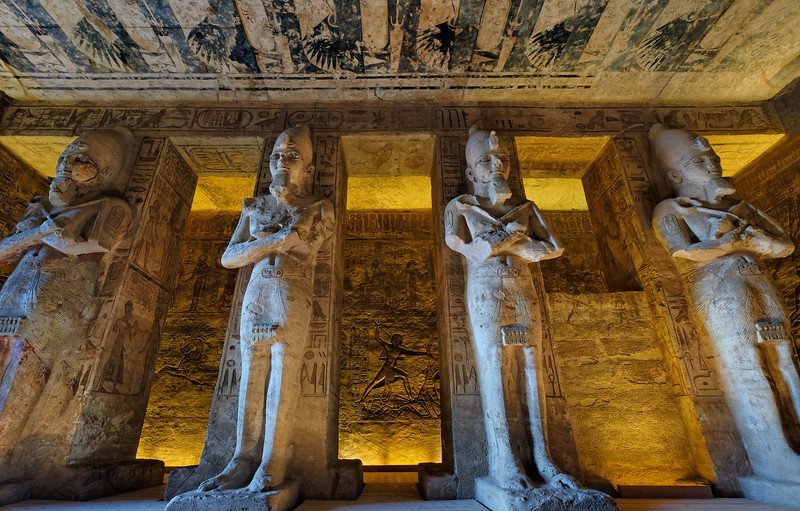
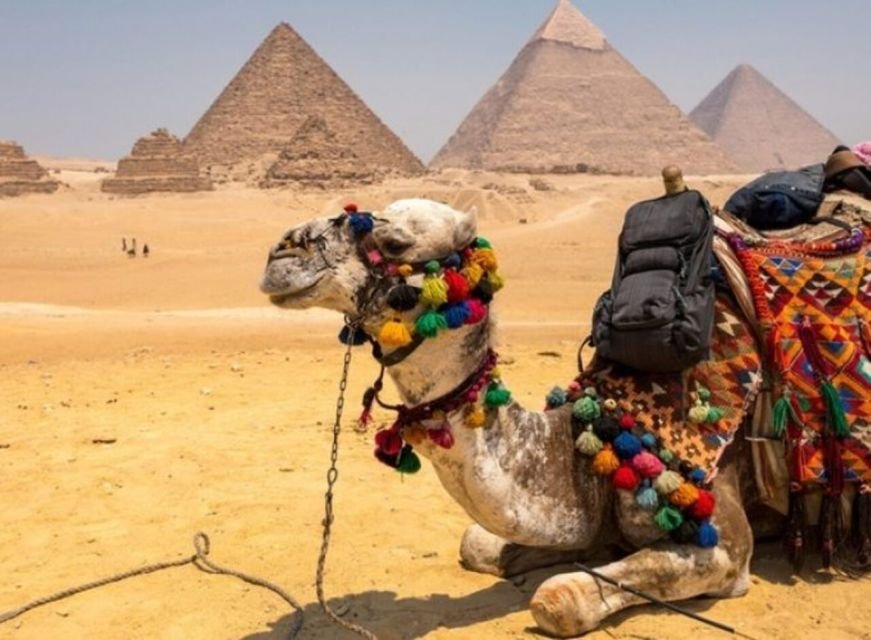

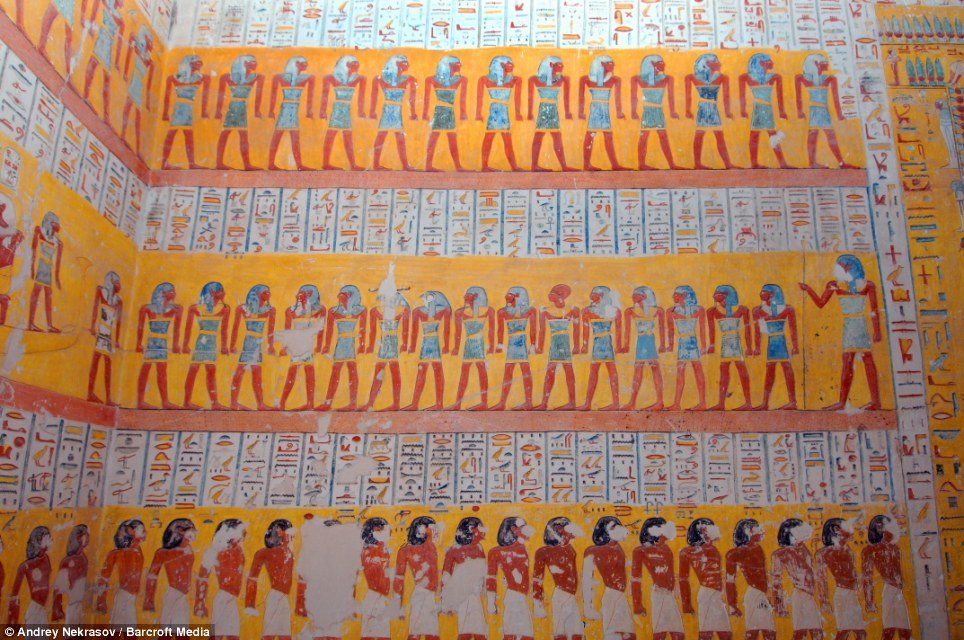

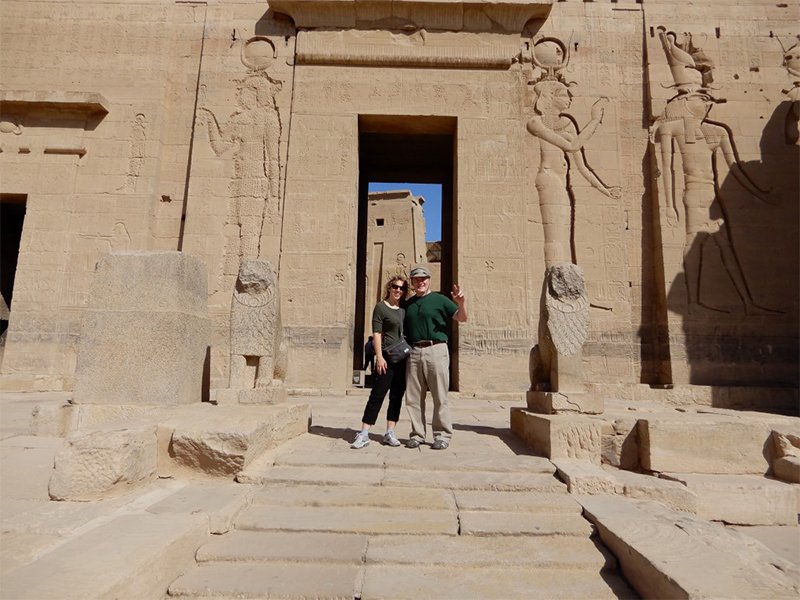

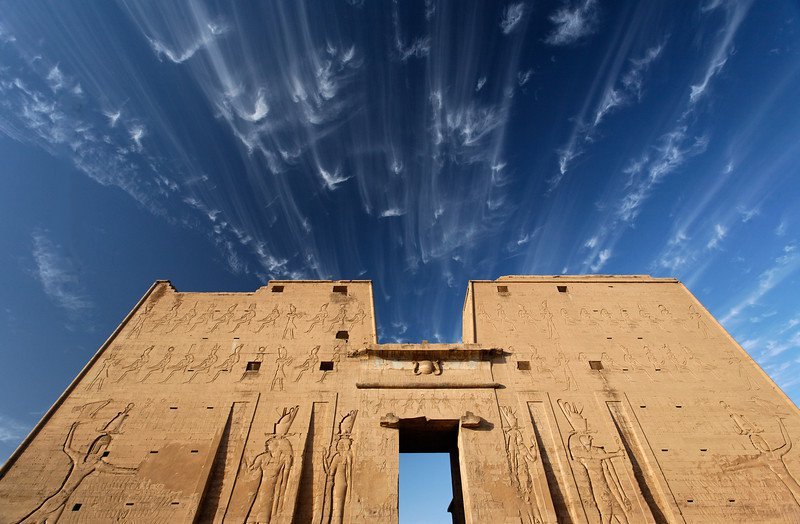
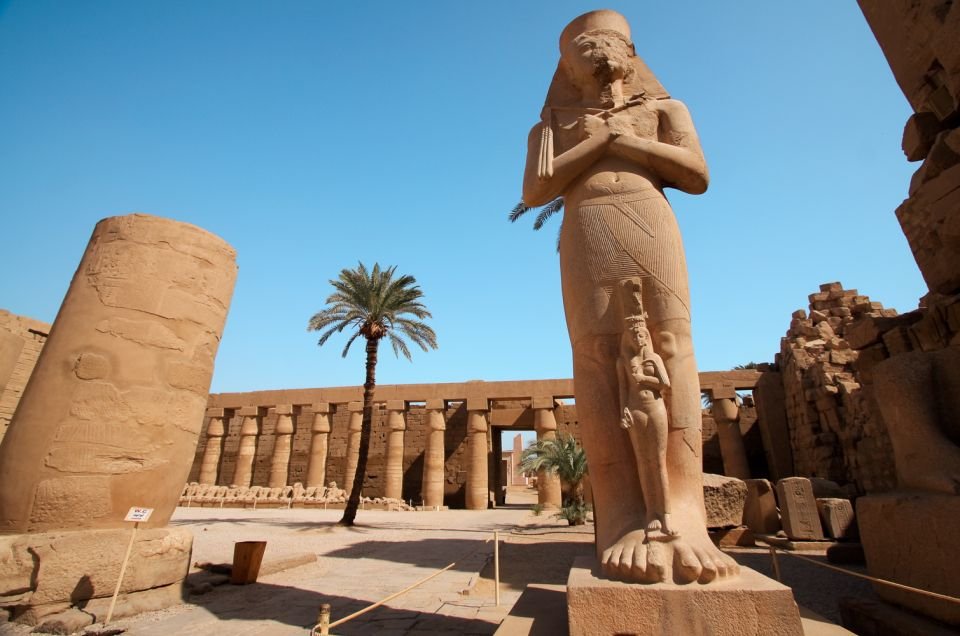


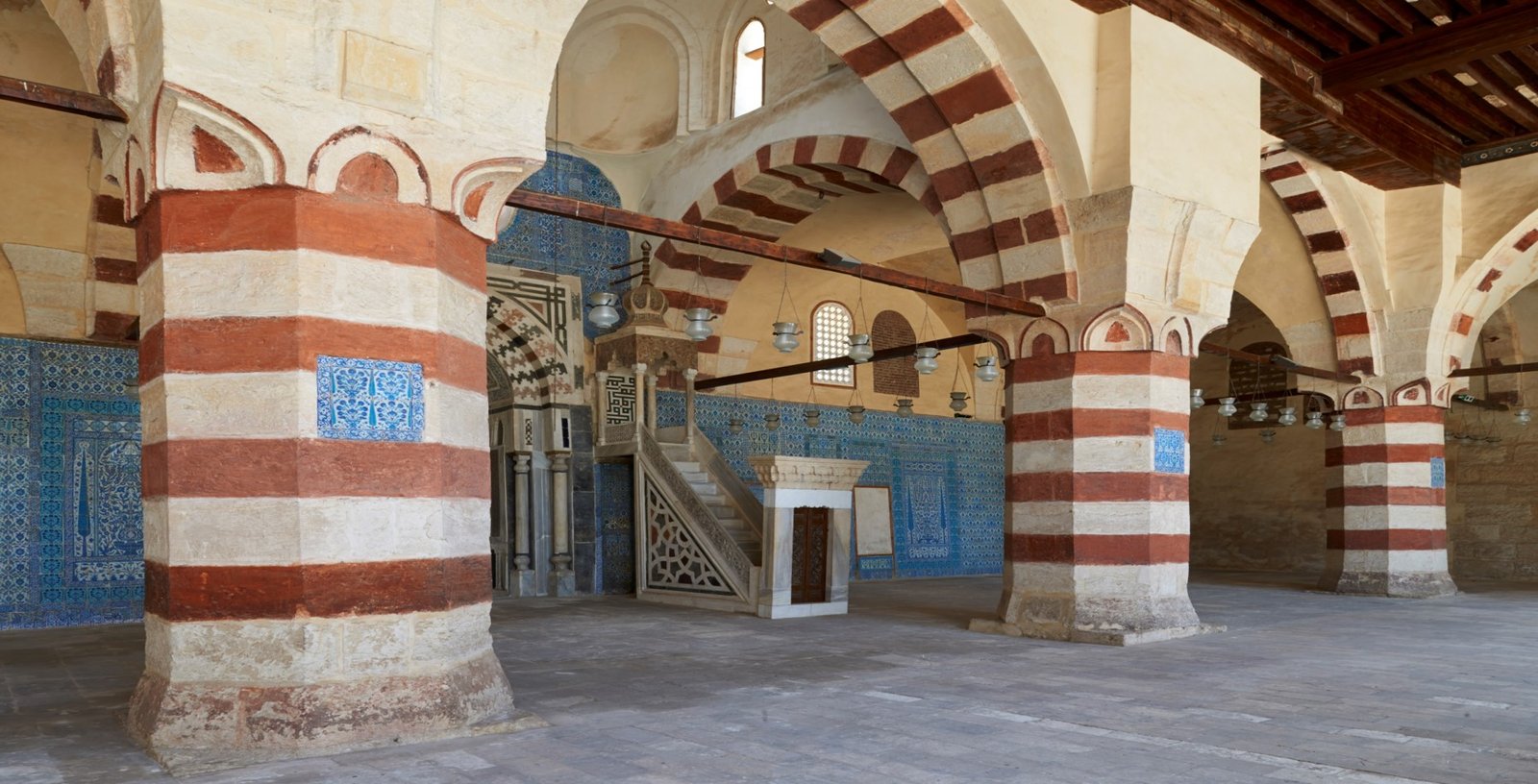





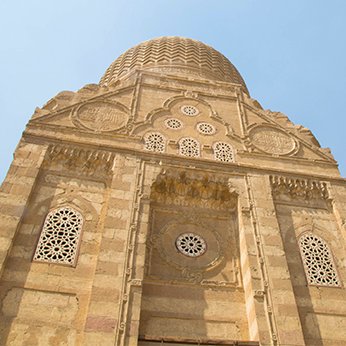

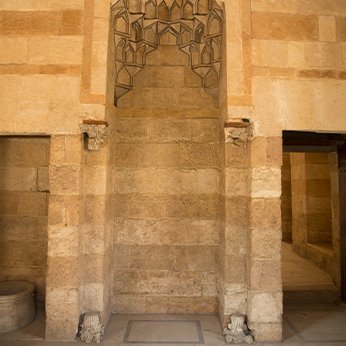
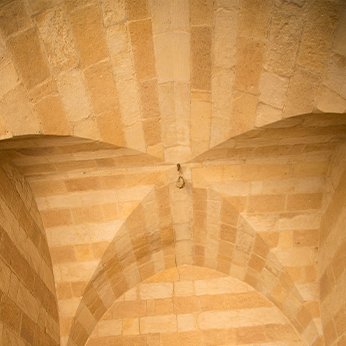
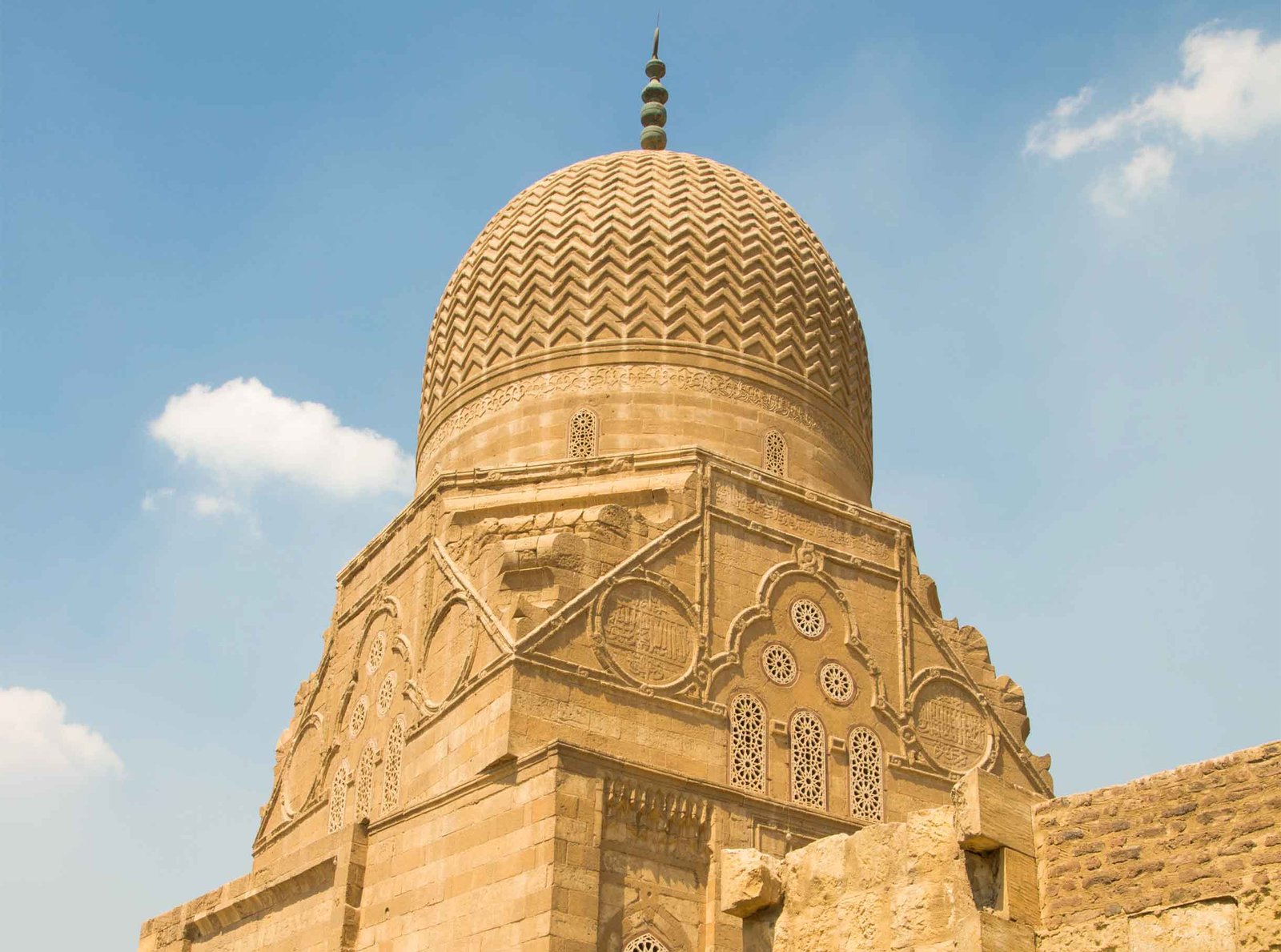
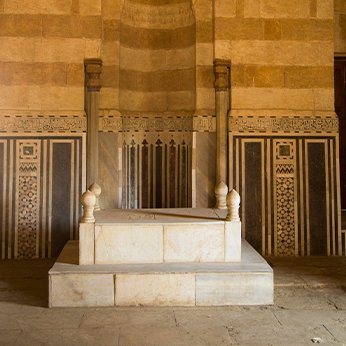
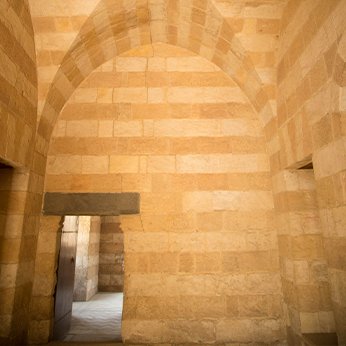
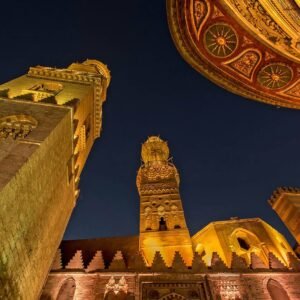

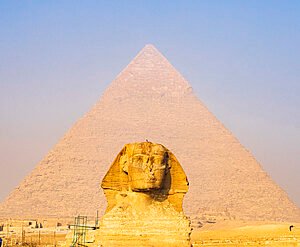

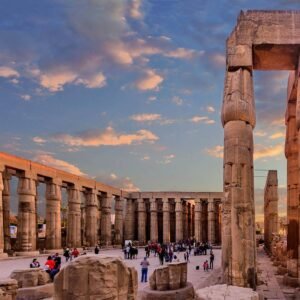
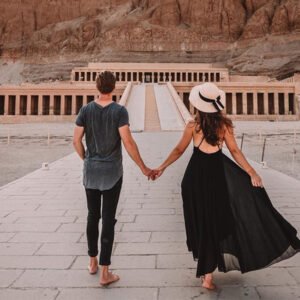
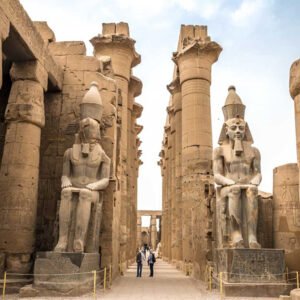

Be the first to review “Abu Simbel Sun Festival Tours packages 15 days Cairo »Alexandria » Nile Cruise”